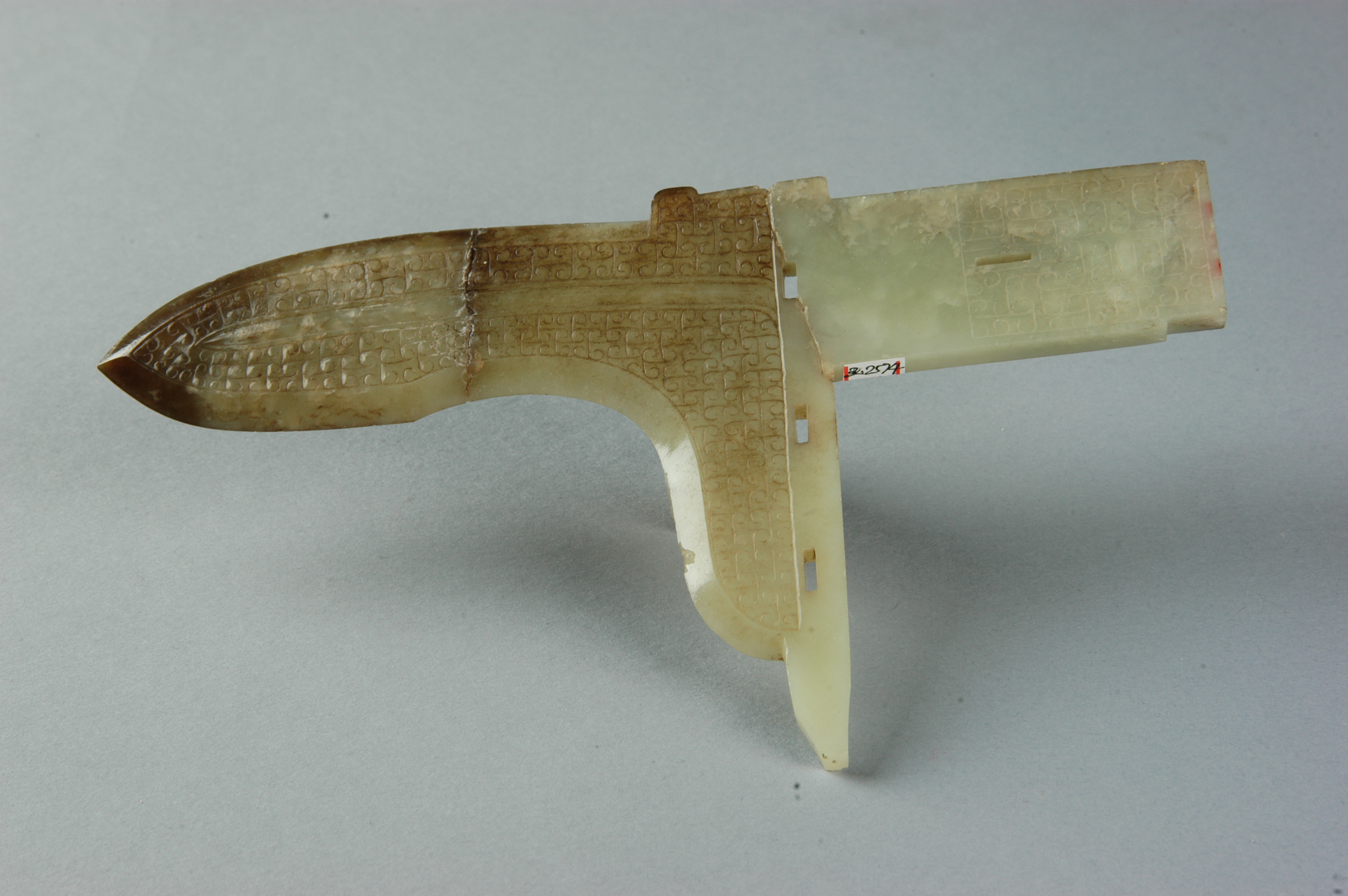Date: Western Han Dynasty (206 BC-AD 25)
Provenance: Unearthed from a Han Dynasty tomb on Xishan mountain, Yongcheng, Henan province, 1986
Measurements: Length: 18.3cm, Width: 10.3cm
This jade dagger is crafted from green nephrite, and features a raised ridge in the middle of the blade with hooked cloud patterns on both sides. The triangular front end of the blade has blunt upper and lower edges, forming a curved edge on the ancillary blade. The rectangular haft is adorned with hooked cloud patterns on both sides and includes a central rectangular perforation, along with three additional rectangular perforations on the hilt.
Dagger-axes were prevalent weapons during the Shang and Zhou dynasties (1600-221 BC) of ancient China, with jade dagger-axe heads first appearing at the Lingjiatan site in Hanshan county, Anhui province. Due to the brittle nature of jade, jade dagger-axe heads were not practical for actual combat. The numerous specimens found without signs of use suggest that they had evolved beyond practical tools, becoming ceremonial items symbolizing power and status. Originating as a weapon, the jade dagger-axe head likely represented military authority.
As ceremonial weapons symbolizing status, dagger-axes with jade heads flourished during the Shang and Zhou dynasties and declined in the Spring and Autumn and Warring States periods (770-221 BC). By the Han Dynasty (206 BC-AD 220), dagger-axes with jade heads had become extremely rare. This item showcases exquisite craftsmanship, with its translucent texture, delicate carvings, and intricate patterns, making it a masterpiece among Han Dynasty jade artifacts.

